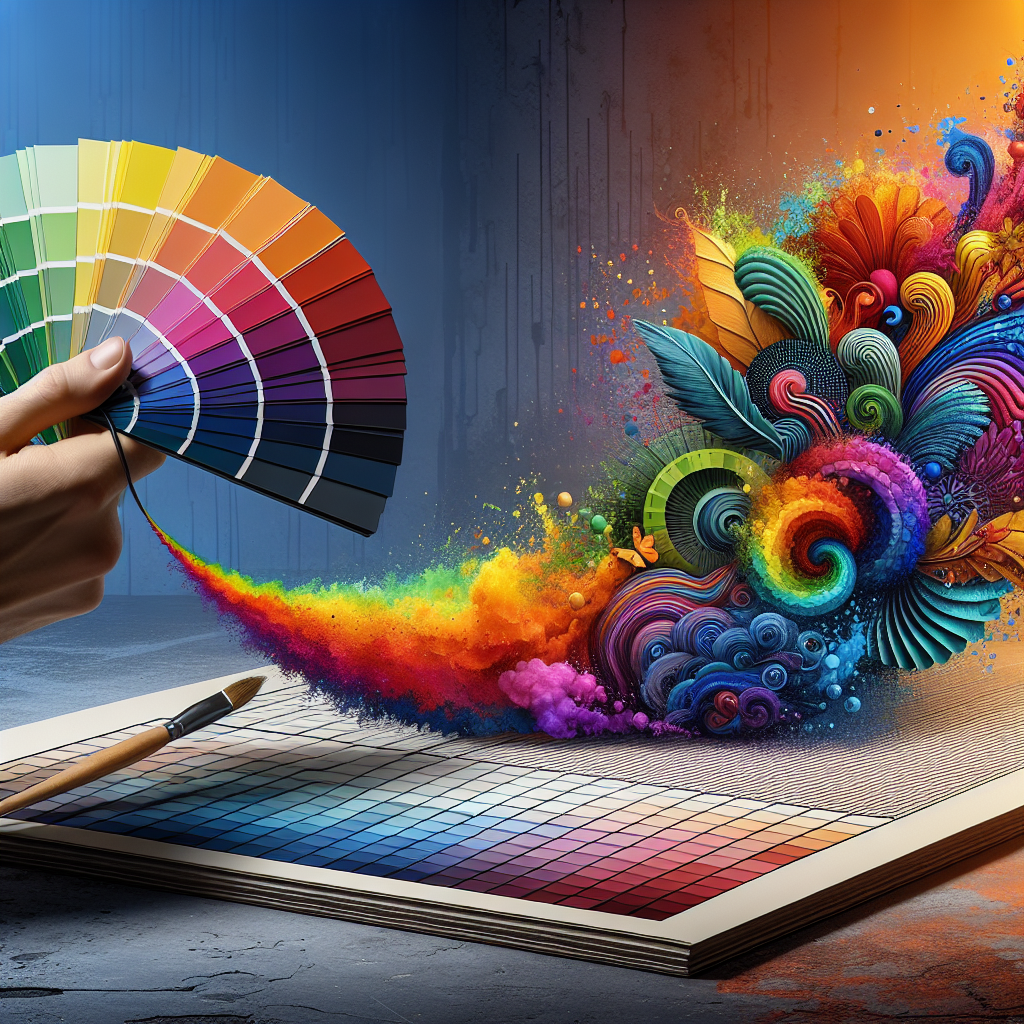The role of color in graphic design cannot be overstated. Color is a key avenue through which designers communicate, elicit responses, and set the mood or tone of a design. The process of selecting appropriate colors for specific design projects is known as color theory. An important part of this theory is the ‘color palette’, an essential tool in the field of graphic design.
Understanding Color Palettes
A color palette is a selection of colors that a designer uses in a graphic design piece. It serves as a guide for creating visual harmony and consistency throughout an entire design or within a series of associated designs, like the pages of a website or a collection of marketing materials. The careful selection of a color palette can significantly influence the perception and reception of the designed piece, ultimately impacting its effectiveness.
Impact on Mood and Emotion
One of the most apparent ways in which color palettes impact graphic design is through the elicitation of mood and emotion. Different colors can symbolize different sentiments or energies. For example, red can denote power, passion or alert, while blue might signify trust, calm, or coolness. Strategic use of these connotations in a design can subtly impact the viewer’s responses and attitudes towards that design, and by extension, the brand or message it represents.
Influence on Brand Identity
Colors are invaluable in constructing and communicating a brand’s identity. A specific shade or palette can become synonymous with a brand, translating to instant recognition among audiences. Color palettes can influence people’s perception of the brand’s personality. Bright, bold colors might portray modernity and energy, while neutral or earth tones could suggest reliability and calmness.
Role in Visual Hierarchy
A well-thought-out color palette can also create a visual hierarchy in a design. This works by using specific colors to draw attention to the most important parts of a design or to differentiate between different sections or types of information. This effective use of color can guide viewers through a design in a coherent and structured way, enhancing user experience and promoting effective interaction with the design.
Impact on Usability and Accessibility
In today’s digital world, where web and app design are more important than ever, color palettes have crucial considerations. Bright foreground colors on darker backgrounds or vice versa can create sufficient contrast for easy reading and navigation. Moreover, being mindful towards those with color vision deficiencies by choosing accessible color combinations can increase a design’s reach and effectiveness.
Conclusion
In conclusion, the impact of color palettes on graphic design is considerable and multifaceted. They contribute to the creation of mood or emotion, can identify and shape perceptions of a brand, establish visual hierarchies, and play a pivotal role in usability and accessibility. As design requirements evolve, so does the understanding and application of color theory and palettes. A well-crafted color palette is as much an art as it is a science, requiring both intuition and understanding of practical considerations.
FAQs
1. What is a color palette?
A color palette is a set of colors chosen by a designer to be used in a particular piece of design work.
2. How do color palettes impact mood and emotion?
Different colors can symbolize different sentiments or energies, and their strategic use can subtly impact the viewer’s responses and attitudes towards a design.
3. How do color palettes influence brand identity?
A specific shade or palette can become synonymous with a brand, and thus color choices can influence people’s perception of the brand’s personality.
4. What is visual hierarchy and how do color palettes contribute?
Visual hierarchy is the arrangement of elements in a design to signify importance. Color palettes can be used to draw attention to key parts of a design or differentiate sections.
5. How do color palettes impact usability and accessibility?
In digital design, the right color combinations can increase contrast for easy reading and navigation and can also be chosen to cater to those with color vision deficiencies.

